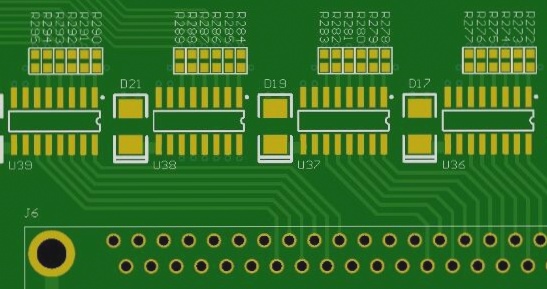Professional PCB Multilayer Board Pressing Process
1. Sequential Lamination
Sequential lamination is a specialized pressing process for multilayer PCB boards. Unlike one-step pressing, it involves multiple stages to gradually increase the board’s level. This method utilizes blind hole or buried hole techniques to achieve interconnection features, saving surface through-holes. This provides more space for additional wiring and mounting SMDs, although it does extend the manufacturing process.
2. Starvation
In the circuit board industry, “starvation” refers to the Resin Starvation issue in multilayer board pressing. This problem arises from poor resin flow or incorrect pressing conditions, leading to a partial lack of glue in the completed multilayer board.
3. Swimming
Swimming is the slight sliding displacement of the inner board surface circuit during multilayer board pressing. This can occur due to the Gel Time of the film used. Shorter gel time films are now preferred in the industry to reduce this issue.
4. Telegraphing
To prevent glue overflow during early lamination, a heat-resistant film like Tedlar is added to the copper foil or thin substrate stacked with loose materials. However, thin films on the outer layer board and 0.5 oz copper foil may lead to the circuit pattern of the inner layer board transferring to the release paper under high pressure, causing Telegraphing.
5. Vacuum Lamination
Vacuum lamination involves pressing multilayer boards and bonding dry films using vacuum technology. Two types are common: vacuum frame type and vacuum chamber type (Autoclave). The vacuum frame type, using a pumping method with a hydraulic press, is more popular due to its simplicity and lower cost. The vacuum chamber type, employing high temperature and high-pressure carbon dioxide with an air pressure method, is less widely used due to its complexity.
6. Wrinkle
Wrinkle occurs when excessive glue flow during pressing reduces the strength and hardness of the outer layer, resulting in wrinkles or creases. This issue is often seen with 0.5 oz copper foil and can impact various applications.
7. Zero Centering
Zero Centering involves stacking and registering bulk materials of a multilayer board using special tool notches. These notches, with arc-shaped short sides and long straight sides, align with aligning pins (Flated Round Pin) to ensure stability in the central plate area and prevent misalignment. This practice is commonly used in American Multiline products.

